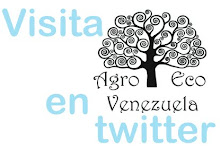Threats to conservation from artificial-intelligence-generated wildlife images and videos
Guerrero-Casado et al., 2025
Cada vez son más frecuentes los videos de animales generados por IA ¿Cuáles son las consecuencias de esto? Este es precisamente en tema que se trabaja en el artículo.
Resumen generado por IA del artículo:
Vínculo al articulo:
https://conbio.onlinelibrary.wiley.com/doi/full/10.1111/cobi.70138
Vínculos a algunos videos de comportamientos animales generados por IA. Algunos claramente falsos, otros más engañosos:
https://www.instagram.com/reel/DQ8rZoGiLSo/?igsh=MXgwbWpjMTJzaHFxcg==
https://www.instagram.com/reel/DPo3oIIDsOn/?igsh=MWhvaXgyNms2N2dzbQ==
https://www.instagram.com/reel/DRIMz7xFhE0/?igsh=MTV1MGFnaTdueno4eA==
https://www.instagram.com/reel/DRHs-ulDRbD/?igsh=MXV3Mmw1d3JlanpqdA==
https://www.instagram.com/reel/DRC430-kQFH/?igsh=Z24yZ3kyMHl3bmd1
https://www.instagram.com/reel/DQjlez9inh0/?igsh=MWU4NHBlMGFhOGV3
https://www.instagram.com/reel/DPG8vQ1EpOx/?igsh=MXV6b2Y3OW1qeDR3bg==
https://www.instagram.com/reel/DP1lkC4DRiP/?igsh=MXg0NDVnNGRvcXNzdA==
https://www.instagram.com/reel/DQjv_pYE-lm/?igsh=MWFydnZ4cHBhYjQ0dg==
https://www.instagram.com/reel/DQgZ5V9CWMv/?igsh=MWNha2Q4cnhjd3pwNA==
https://www.instagram.com/reel/DQ6T20Wijpf/?igsh=MXZvZnU0bTkxejg0ZQ==
https://www.instagram.com/reel/DQGTBBhjE-J/?igsh=b2ZobjJzcHpxNmZ6
https://www.instagram.com/reel/DP-AxJICC6m/?igsh=Y2g5eTI2cGYxb2Jm
https://www.instagram.com/reel/DQw05CViMQE/?igsh=MTI1dGd6NmpsNDRqZg==
https://www.instagram.com/reel/DPyRrFCjMNH/?igsh=ZjFib3RjbHVma2Vh
https://www.instagram.com/reel/DQ94EFEDlPe/?igsh=MTgyMWY2dWo5ZWt4bA==
https://www.instagram.com/reel/DRChYI0lVrG/?igsh=MXZ4MHlmOTQwZjFjdQ==
https://www.instagram.com/reel/DP1UHr4k4aO/?igsh=MTlkN3B5bXp0NDR3dA==
https://www.instagram.com/reel/DQ7V2JTgSbi/?igsh=azU2aGpiN3k0aWJz
https://www.instagram.com/reel/DRF07uajRzI/?igsh=MTllZXVvdXh0eXFhaw==
https://www.instagram.com/reel/DRARE25EjIj/?igsh=bG0wd3B6bGVvZDd3
https://www.instagram.com/reel/DPbkwKoDJhx/?igsh=NTl0NXBwNWo4ajVi
%2011.54.43%20a.%C2%A0m..png)



%205.52.57%20p.%C2%A0m..png)











